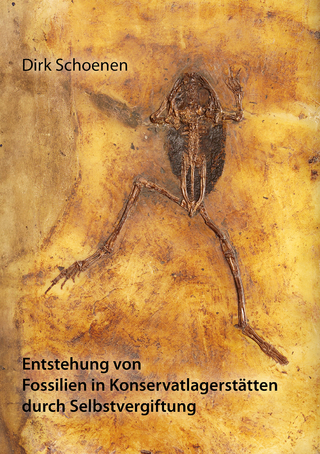
Utilizing the Paleobiology Database to Provide Educational Opportunities for Undergraduates
Seiten
2018
Cambridge University Press (Verlag)
978-1-108-71790-8 (ISBN)
Cambridge University Press (Verlag)
978-1-108-71790-8 (ISBN)
'Big data' science initiatives, such as the Paleobiology Database (PBDB), provide inexpensive and accessible research opportunities for undergraduate courses. This Element provides an introduction to what the PBDB is, how to use it, how it can be deployed in introductory and advanced courses, and examples of how it has been used in undergraduate research.
Integration of research experiences into the undergraduate classroom can result in increased recruitment, retention, and motivation of science students. 'Big data' science initiatives, such as the Paleobiology Database (PBDB), can provide inexpensive and accessible research opportunities. This Element provides an introduction to what the PBDB is, how to use it, how it can be deployed in introductory and advanced courses, and examples of how it has been used in undergraduate research. The PBDB aims to provide information on all fossil organisms, across the tree of life, around the world, and through all of geologic time. The PBDB Resource Page contains a range of PBDB tutorials and activities for use in physical geology, historical geology, paleontology, sedimentology, and stratigraphy courses. As two-year colleges, universities, and distance-based learning initiatives seek research-based alternatives to traditional lab exercises, the PBDB can provide opportunities for hands-on science activities.
Integration of research experiences into the undergraduate classroom can result in increased recruitment, retention, and motivation of science students. 'Big data' science initiatives, such as the Paleobiology Database (PBDB), can provide inexpensive and accessible research opportunities. This Element provides an introduction to what the PBDB is, how to use it, how it can be deployed in introductory and advanced courses, and examples of how it has been used in undergraduate research. The PBDB aims to provide information on all fossil organisms, across the tree of life, around the world, and through all of geologic time. The PBDB Resource Page contains a range of PBDB tutorials and activities for use in physical geology, historical geology, paleontology, sedimentology, and stratigraphy courses. As two-year colleges, universities, and distance-based learning initiatives seek research-based alternatives to traditional lab exercises, the PBDB can provide opportunities for hands-on science activities.
1. Introduction; 2. How to use the Paleobiology Database; 3. Educational integration – examples and ideas; 4. Conclusions.
| Erscheinungsdatum | 06.12.2018 |
|---|---|
| Reihe/Serie | Elements of Paleontology |
| Zusatzinfo | Worked examples or Exercises; 1 Tables, black and white; 4 Plates, color; 6 Line drawings, black and white |
| Verlagsort | Cambridge |
| Sprache | englisch |
| Maße | 153 x 230 mm |
| Gewicht | 70 g |
| Themenwelt | Naturwissenschaften ► Geowissenschaften ► Mineralogie / Paläontologie |
| Sozialwissenschaften ► Pädagogik | |
| ISBN-10 | 1-108-71790-X / 110871790X |
| ISBN-13 | 978-1-108-71790-8 / 9781108717908 |
| Zustand | Neuware |
| Informationen gemäß Produktsicherheitsverordnung (GPSR) | |
| Haben Sie eine Frage zum Produkt? |
Mehr entdecken
aus dem Bereich
aus dem Bereich
Buch | Softcover (2024)
Shaker (Verlag)
19,80 €
Von Prinz Eugen und der Seekuh in Ottakring: eine Zeitreise durch die …
Buch | Softcover (2024)
Naturhistorisches Museum (Verlag)
19,90 €


